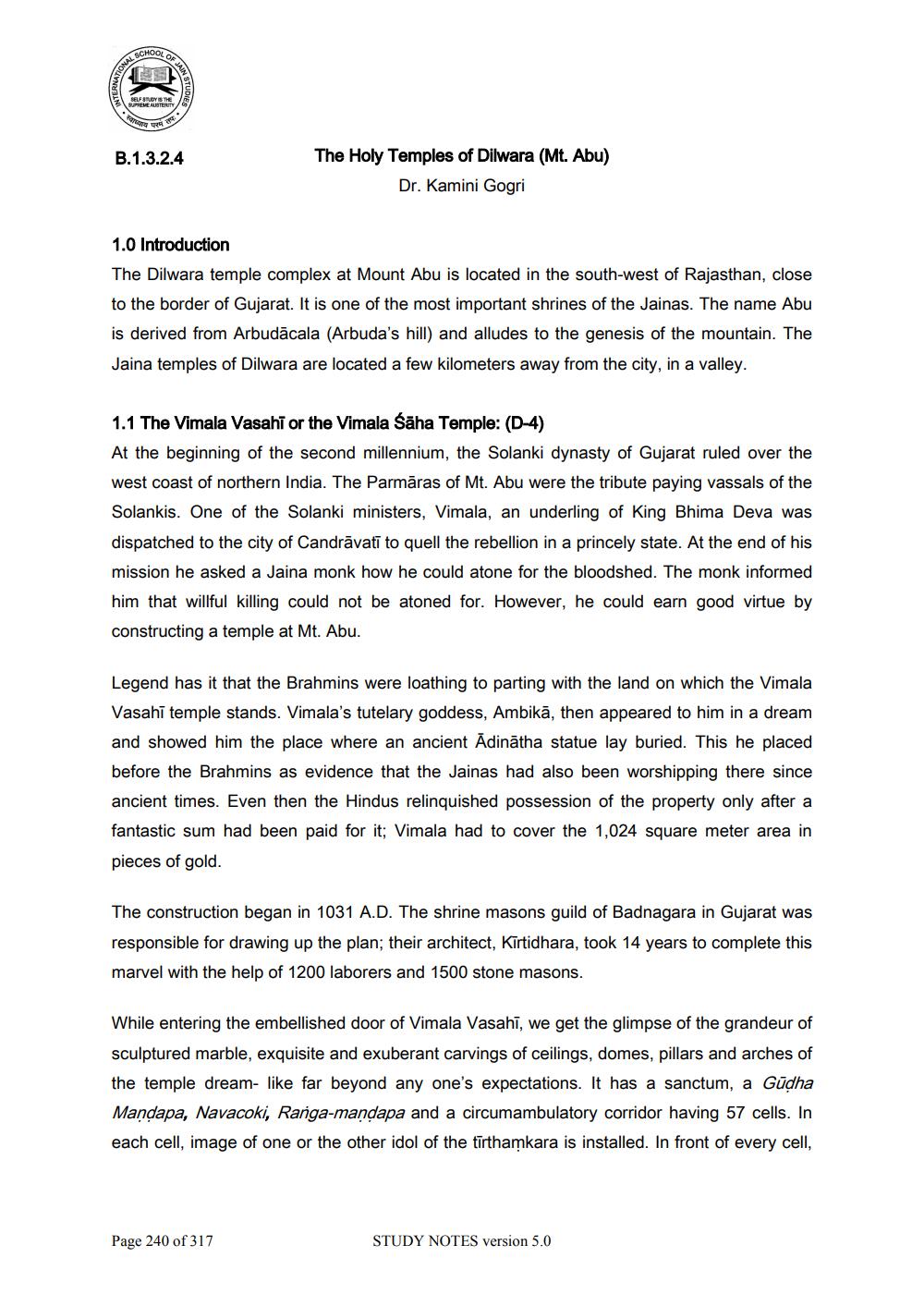________________
SCHOOL
TIONAL
OF
JAN STUDIES
SELF STUDY IS THE SUPREME AUSTERITY
स्वाध्याय परम तप
B.1.3.2.4
•
The Holy Temples of Dilwara (Mt. Abu)
Dr. Kamini Gogri
1.0 Introduction
The Dilwara temple complex at Mount Abu is located in the south-west of Rajasthan, close to the border of Gujarat. It is one of the most important shrines of the Jainas. The name Abu is derived from Arbudacala (Arbuda's hill) and alludes to the genesis of the mountain. The Jaina temples of Dilwara are located a few kilometers away from the city, in a valley.
1.1 The Vimala Vasahi or the Vimala Šāha Temple: (D-4)
At the beginning of the second millennium, the Solanki dynasty of Gujarat ruled over the west coast of northern India. The Parmāras of Mt. Abu were the tribute paying vassals of the Solankis. One of the Solanki ministers, Vimala, an underling of King Bhima Deva was dispatched to the city of Candrāvatī to quell the rebellion in a princely state. At the end of his mission he asked a Jaina monk how he could atone for the bloodshed. The monk informed him that willful killing could not be atoned for. However, he could earn good virtue by constructing a temple at Mt. Abu.
Legend has it that the Brahmins were loathing to parting with the land on which the Vimala Vasahi temple stands. Vimala's tutelary goddess, Ambika, then appeared to him in a dream and showed him the place where an ancient Adinatha statue lay buried. This he placed before the Brahmins as evidence that the Jainas had also been worshipping there since ancient times. Even then the Hindus relinquished possession of the property only after a fantastic sum had been paid for it; Vimala had to cover the 1,024 square meter area in pieces of gold.
The construction began in 1031 A.D. The shrine masons guild of Badnagara in Gujarat was responsible for drawing up the plan; their architect, Kirtidhara, took 14 years to complete this marvel with the help of 1200 laborers and 1500 stone masons.
While entering the embellished door of Vimala Vasahi, we get the glimpse of the grandeur of sculptured marble, exquisite and exuberant carvings of ceilings, domes, pillars and arches of the temple dream- like far beyond any one's expectations. It has a sanctum, a Gūḍha Mandapa, Navacoki, Rariga-mandapa and a circumambulatory corridor having 57 cells. In each cell, image of one or the other idol of the tirthamkara is installed. In front of every cell,
Page 240 of 317
STUDY NOTES version 5.0




